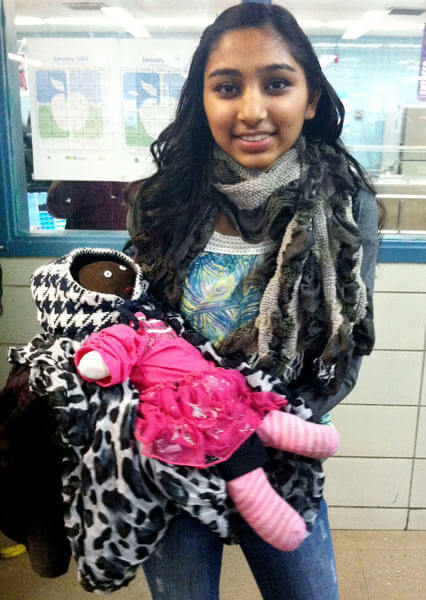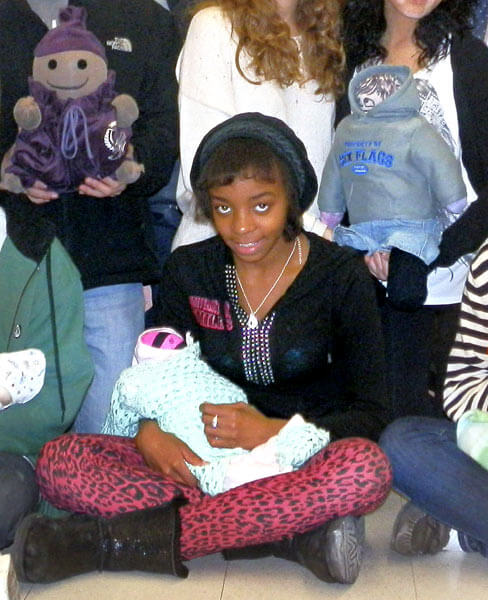By Phil Corso
A sociology teacher at Bayside’s Benjamin N. Cardozo High School got a rise out of her students when she chose to fight teenage pregnancy with sacks of flour.
In most traditional middle and high school programs, students would receive an egg to care for and prove their durability as potential parents by returning it without a crack. But in Robin Sita’s class, the 22 young teenagers from 10th- to 12th-grades were tasked with dressing and looking after a less messy, different kind of delicacy: hefty 5-pound bags of flour.
Sita said she launched the new approach to understanding teenage pregnancy so students could see and feel the responsibilities of raising an infant firsthand.
“There are a lot of shows on television today that sort of sensationalize pregnancy,” Sita said. “In reality, it is very time-consuming and expensive.”
At the beginning of the course, Sita said her students had to make their babies out of sacks of flour to be either shared with a peer or cared for solo. The kids used pantyhose, typically matching the color of their skin, and duct tape to fasten a makeshift baby with arms, legs and a head of its own. Students also crafted their own birth certificates for the powdery rug rats and had different teachers throughout the day sign off that they were being taken care of.
Every day, the toddlers had to be accounted for, Sita said. Students were provided with weekly budgets to account for car seats, strollers and more, and could not let their flour babies out of sight unless they were left with a baby-sitter.
“They were shocked,” Sita said of her class’ reaction by the course’s end. “The students didn’t know where they would get all the money they needed while in school. I think by the end the kids had a whole new outlook.”
In 2011, the United States reached a record low for teenage births with 329,797 — about 8 percent lower than the year before, according to the U.S. Centers for Disease Control and Prevention. While the exact reasons as to why the numbers have dropped were not clear, the CDC said sexually active teens seemed to be using birth control more than in previous years.
Beyond the hands-on caretaking aspect of the course, Sita said her students got a close look at how society views them if they are young and with child. For most students, the 11-year sociology teacher said flour babies joined them on their school bus commutes to and from school and drew some harsh criticism from their peers.
Since she initially launched the course late last year, Sita said interest in her sociology class has seen a drastic increase in enrollment because of her project-based learning technique. And for the ultimate payoff, Sita said the first students to go through the program used their flour to bake cookies for the class when their temporary parenthoods were put to a grade.
“Today, I think kids are looking for a sense of responsibility,” Sita said. “This may have been a non-conventional way of learning, but this gave them some sort of direction and hands-on experience.”
Reach reporter Phil Corso by e-mail at pcorso@cnglocal.com or by phone at 718-260-4573.



































